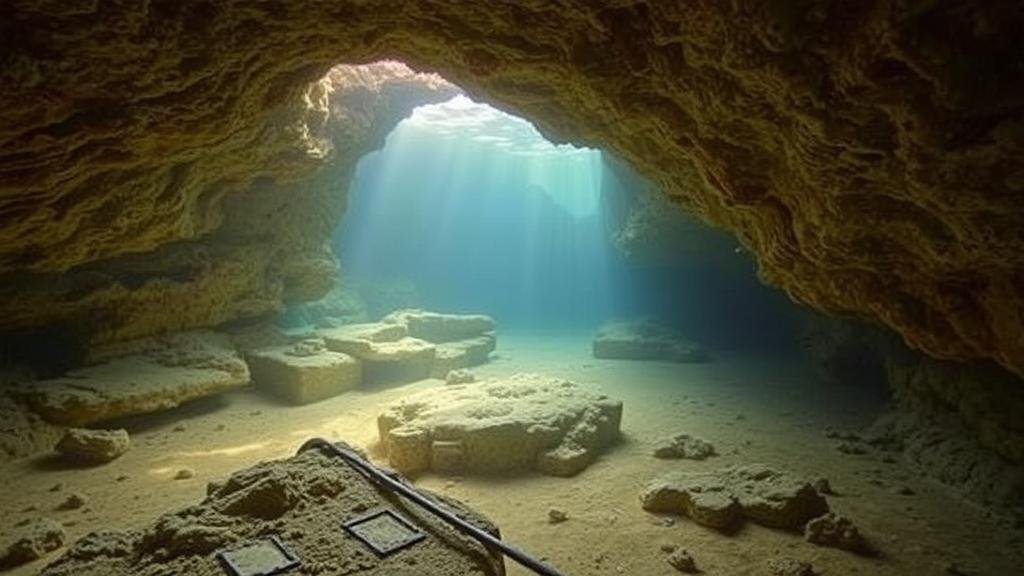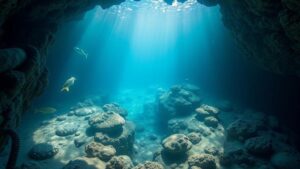Rediscovering forgotten cultural treasures in sunken caves under islands.
Rediscovering Forgotten Cultural Treasures in Sunken Caves Under Islands
Throughout history, islands have served as crossroads for different cultures, but beneath their serene surfaces lie sunken caves that conceal a wealth of forgotten cultural treasures. As climates change and sea levels rise, these accessible cavities reveal ancient artifacts, art, and relics that tell the stories of past civilizations. Rediscovering these treasures not only enriches our understanding of human history but also provides insights into how ancient societies adapted to their environments.
The Significance of Sunken Caves
Sunken caves, also known as underwater caves or submerged caves, are natural formations created by geological processes. e caves often become submerged due to rising sea levels, making them unique archaeological sites. They act as time capsules, preserving artifacts in a stable, oxygen-poor environment where organic materials can survive for thousands of years.
For example, the Blue Hole off the coast of Belize is famous not only for its stunning natural beauty but also for the archaeological treasures it contains. Researchers have found ancient pottery and tools dating back to the Maya civilization, around 300 AD, highlighting the cultural significance of these submerged environments.
Notable Discoveries
Several significant discoveries have been made in sunken caves across the globe. Here are a few noteworthy examples:
- Sima de las Cotorras, Mexico – This deep sinkhole cave is home to countless artifacts belonging to the ancient Maya. Excavations have revealed ceremonial objects such as jade artifacts and clay figurines that shed light on Maya life and their religious practices.
- Sharks Bay, Aegina Island, Greece – Underwater excavations here have uncovered remnants from the Neolithic period, including stone tools and evidence of early human habitation that date back to 5000 BC. This discovery has transformed the understanding of early Mediterranean cultures.
- The Catacombs of Paris, France – While not entirely submerged, parts of these underground tunnels include submerged sections that hold relics from the French Revolution, such as weapons and personal items of historical importance.
The Role of Technology in Exploration
Advancements in technology have played a crucial role in the exploration of sunken caves. Underwater drones and remote-operated vehicles (ROVs) enable researchers to safely navigate these challenging environments, gather high-resolution images, and conduct 3D scans of submerged artifacts.
For example, the use of sonar mapping technology in the Cenote de las Caciques in the Yucatán Peninsula has allowed archaeologists to visualize the caves interior without traditional excavation methods. This non-invasive approach helps to preserve the fragile ecosystems while still recovering invaluable data.
Future Prospects and Challenges
As we continue to explore these submerged cultural landscapes, several challenges must be addressed:
- Climate Change – Rising sea levels and increasing storm activity threaten the preservation of these treasures. Urgent measures must be taken to protect these sites from erosion and flooding.
- Tourism Impact – The growth of underwater tourism can lead to environmental degradation. It is crucial to implement sustainable practices to balance preservation with public interest.
Ultimately, the quest to rediscover lost treasures beneath the waves serves a greater purpose; it enhances our understanding of cultural histories while emphasizing the importance of environmental stewardship.
Actionable Takeaways
For individuals interested in promoting the conservation of sunken cultural treasures, consider the following actions:
- Support archaeological projects focused on underwater exploration.
- Participate in or promote eco-tourism initiatives that prioritize the protection of submerged archaeological sites.
- Educate others about the importance of preserving our cultural heritage in the face of climate change.
Rediscovering forgotten treasures in sunken caves under islands is not just an archaeological endeavor; it is a journey into the depths of our shared human heritage that reverberates with lessons for our future.



